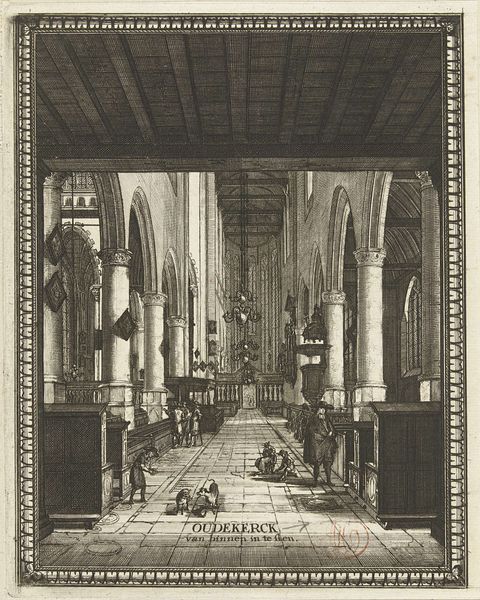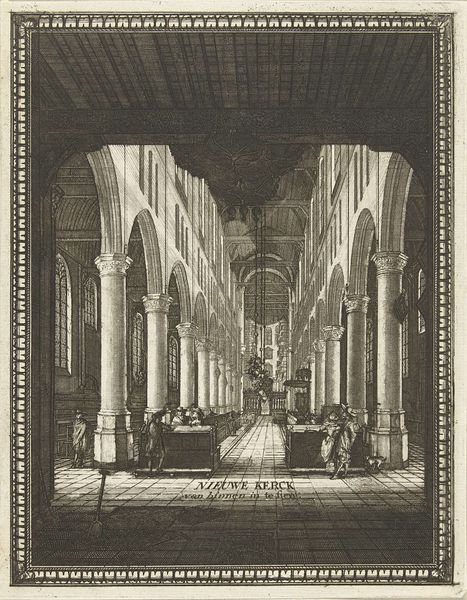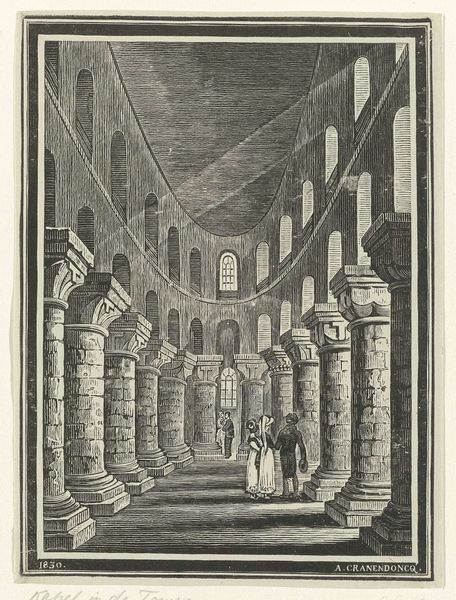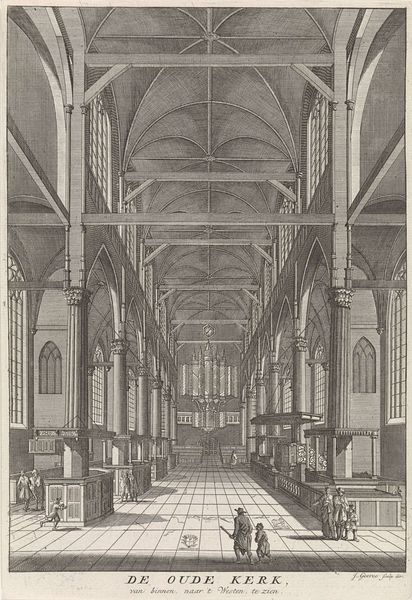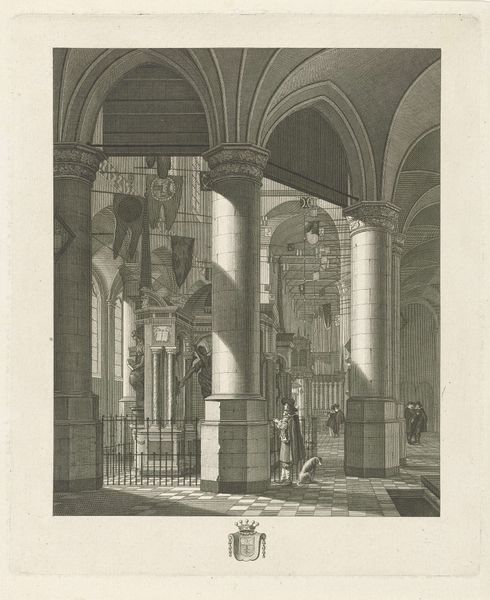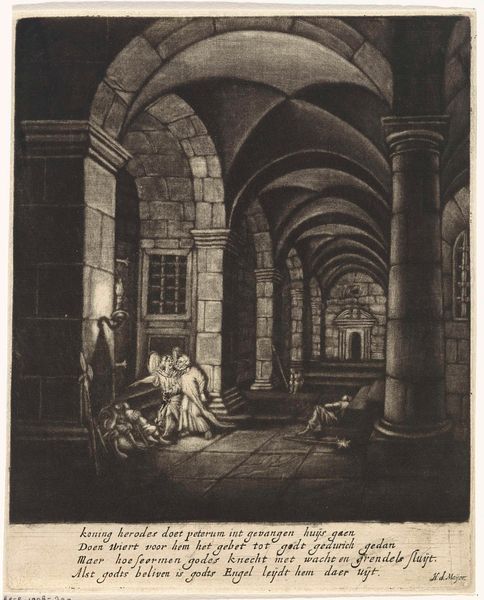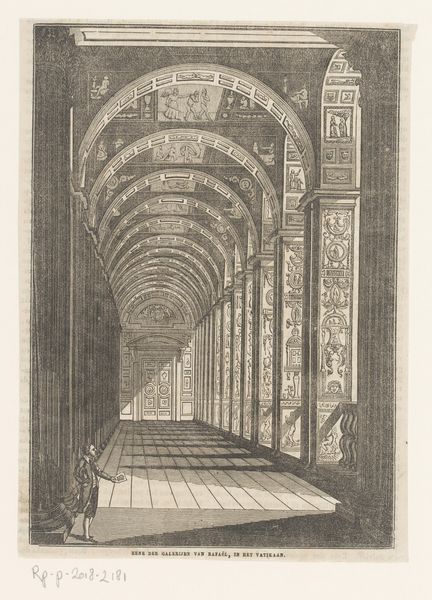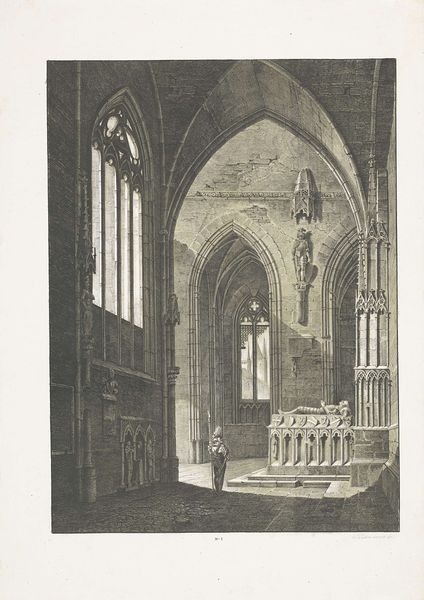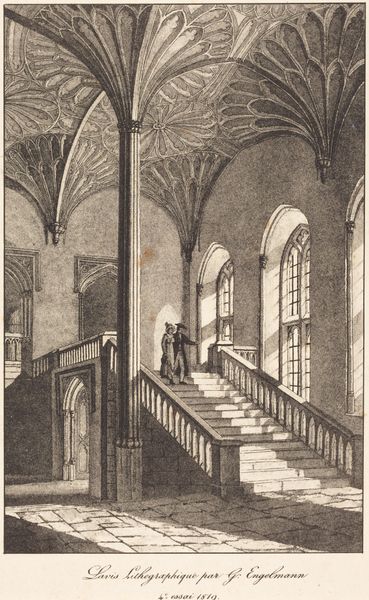
Copyright: National Gallery of Art: CC0 1.0
Editor: We're looking at M.C. Escher's "Nieuwe Kerk" from 1939, a black and white engraving of the interior of a church. I’m struck by how the strong lines create a dramatic sense of depth, almost pulling you into the image. What do you see in this piece, especially considering the historical context? Curator: The sharp contrasts and exaggerated perspective typical of Escher are certainly arresting. This work, created on the eve of the Second World War, prompts us to consider the role of institutions, like the church depicted, in times of upheaval. The heavy shadows and rigid architecture might be read as symbolic of the inflexible structures of power and belief prevalent at the time. Editor: So you see the visual choices, like the strong lines, as potentially representative of the social climate? Curator: Precisely. Escher, while known for his mathematical approach, wasn’t working in a vacuum. His depictions of enclosed spaces and repetitive forms could be interpreted as a commentary on the constraints placed on individuals by society and, specifically, by established religion. Editor: That's fascinating. I hadn't considered the political undercurrents in what seems like a purely architectural study. It challenges the idea of art for art's sake. Curator: Exactly! And, we should question: was Escher consciously making these statements, or were they simply a product of his time and place, unconsciously embedded in his work? Ultimately, how the public perceives and interprets such imagery significantly shapes its lasting relevance. Editor: I learned so much about considering artwork within a larger social framework. Thanks! Curator: Likewise, thinking about Escher’s technical skill in relation to historical tensions gives this artwork a richer meaning for me.
Comments
No comments
Be the first to comment and join the conversation on the ultimate creative platform.
